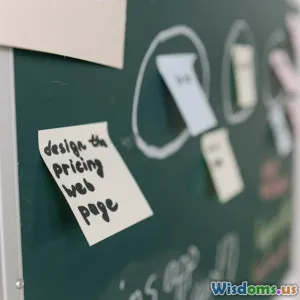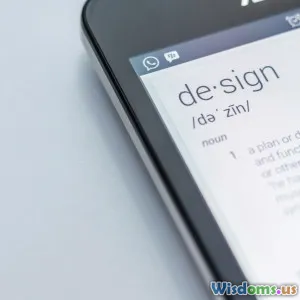
Challenging the Myths About Using Animation in Slide Design
7 min read Debunk common animation myths in slide design to create engaging, effective presentations that captivate and inform your audience. (0 Reviews)
Challenging the Myths About Using Animation in Slide Design
Animations in slide design have long been a controversial topic among presenters, designers, and educators. While some herald them as a powerful tool to captivate audiences and clarify content, others dismiss animation as distracting or unprofessional. This divide stems from several misconceptions and myths surrounding the use of animation in presentations.
In this article, we will dissect these myths, examine real-world examples, and offer insightful guidelines on how animation can be a valuable ally—not an adversary—in your slide design arsenal.
Introduction: Why We Fear Animation
Imagine sitting through a presentation where countless slides flash with spinning icons, bouncing text, and overly complex transitions. Chances are, you felt overwhelmed or even annoyed. This experience has bred skepticism: Is animation inherently distracting? Does it reduce professionalism? These questions shape many negative perceptions.
However, dismissing animation outright overlooks its nuanced potential. The true question should be: How can animation amplify the message rather than hinder it? Before diving into best practices, let’s debunk persistent myths that barricade animation’s deserved place in slide design.
Myth 1: Animation Is Always Distracting
The Reality
Many believe every animated element on a slide pulls focus away from the content. While it’s true poor animation can cause cognitive overload, animation done well can guide viewers’ attention and improve comprehension.
Evidence in Cognitive Psychology
Studies on multimedia learning, such as those summarized by Mayer (2009), emphasize the signaling effect of animation. Motion draws the eye to key points, helping viewers naturally filter information. For example, animating bullet points sequentially helps the audience process one idea at a time instead of reading ahead prematurely.
Real-World Example
TED Talks often use subtle text or graphic animations that complement the speaker’s narrative without overwhelming viewers. The animation serves as a spotlight, not a distraction. This shows that context and timing are crucial.
Myth 2: Only Simple, Minimalist Slides Are Professional
Wrong Assumption
Some professionals avoid animation fearing it clashes with a formal tone. However, professionalism is defined by clarity and coherence—not by austerity.
Animation Enhancing Professionalism
For corporate presentations, animations can highlight transitions between complex data sets, making explanations smoother. For instance, animating a graph’s growth over time can visually reinforce the speaker’s analysis, demonstrating mastery over the material.
International brands like Apple skillfully use subtle animations in product presentations to convey sophistication and innovation, not frivolity.
Myth 3: Animation Lengthens Presentation Time Unnecessarily
Efficient, Not Excessive
A common worry is that animations waste time. In reality, when animations are concise and purposeful, they help deliver content more efficiently by emphasizing important points.
Strategic Animation Saves Time
Instead of explaining every detail verbally, a single well-crafted animation can show a workflow or process clearly in seconds. For example, animating a step-by-step workflow can replace lengthy verbal descriptions and improve retention.
Myth 4: Animation Requires Advanced Skills and Complex Software
It’s More Accessible Than You Think
Modern presentation tools (PowerPoint, Keynote, Google Slides) incorporate intuitive animation features that don’t demand advanced technical skills.
Practical Tip
Using preset animations like 'fade-in' or 'wipe' effectively enhances your slides without complexity. Mastering timing and moderation is more valuable than creating elaborate animations.
Best Practices for Using Animation in Slide Design
1. Purpose First
Make sure every animation adds value — to clarify, emphasize, or transition.
2. Keep It Subtle
Avoid flashy or excessive motion that steals the show.
3. Use Sequential Animation
Reveal content stepwise to maintain focus and promote understanding.
4. Complement the Narrative
Animations should align tightly with the speaker’s words.
5. Test for Audience Reaction
Seek feedback; what enhances one audience’s experience could hinder another’s.
Conclusion: Animation as a Power Tool, Not a Gimmick
The myths surrounding animation in slide design are rooted in experiences of misuse rather than inherent flaws in the medium. Instead of rejecting animation outright, presenters and designers must embrace it thoughtfully — combining evidence-based strategies with creative intent.
Used wisely, animation transforms slides from static visuals into engaging stories. It clarifies, focuses, and invigorates presentations. So next time you hesitate before adding movement to your slide deck, remember that animation isn’t the enemy — it’s an opportunity.
Unlock your slides’ potential by challenging old beliefs and harnessing animation’s power to captivate and communicate effectively.
References
- Mayer, R.E. (2009). Multimedia Learning (2nd Edition). Cambridge University Press.
- TED Talks examples: Presentation style and use of on-screen visuals.
- Apple Keynotes: Visual storytelling and product launches.
Ready to transform your slide design? Start experimenting with subtle and purposeful animation today and watch your presentations come alive.
Rate the Post
User Reviews
Popular Posts




















